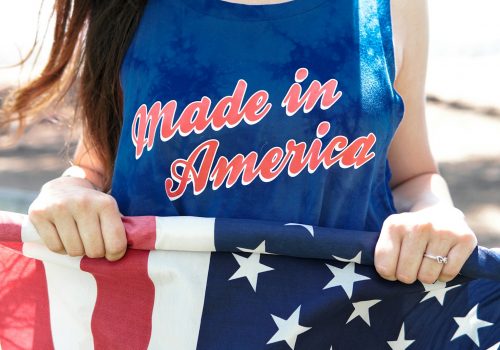When it comes to maritime terminology, one question that often comes up is: What’s the difference between a boat and a yacht? While the two terms are often used interchangeably by those unfamiliar with nautical terms, there are actually significant distinctions between them. Understanding these differences not only helps in identifying the type of vessel but also provides insight into their purpose, size, luxury, and capabilities.
In this article, we’ll dive into the key factors that set boats and yachts apart, covering everything from size and design to function and cost. By the end, you’ll be able to clearly differentiate between these two types of watercraft and better understand their respective roles in the world of marine travel and recreation.
1. Size: The Most Obvious Difference
One of the primary distinctions between a boat and a yacht is the size. In general, a boat refers to any watercraft that is smaller in size and used for a variety of purposes, including fishing, transportation, or recreation. Boats can range in size from small dinghies and canoes to larger motorboats or sailboats. However, when a vessel reaches a certain size and offers more luxurious features, it typically crosses over into the category of a yacht.
A yacht is typically a larger, more sophisticated vessel, usually starting around 30 to 40 feet in length. In fact, some yachting experts suggest that a yacht begins at around 33 feet, but the designation can vary. Yachts can range up to several hundred feet long, and those over 100 feet are often classified as mega yachts or super yachts. The larger size of yachts allows for more amenities, crew members, and comfort, distinguishing them from smaller boats.
2. Luxury and Amenities
While both boats and yachts can be used for leisure, one of the biggest differences between them is the level of luxury and the amenities they offer. Boats, especially smaller recreational or fishing boats, are typically simpler in design and may offer basic features such as seating, a small cabin, and storage space. Boats are generally used for day trips or short excursions and may not be equipped with extensive living quarters or lavish amenities.
In contrast, a yacht is often associated with luxury, offering a wide range of high-end features that cater to comfort and entertainment. Yachts typically come with spacious living quarters, multiple cabins, full kitchens (known as galleys), bathrooms, and areas for dining and lounging. Larger yachts may also offer jacuzzis, entertainment rooms, bars, and sun decks. Some yachts even include special amenities like gyms, swimming pools, and helipads for added extravagance.
Yachts are also designed for longer journeys, meaning they are often equipped with more powerful engines, advanced navigation systems, and better facilities for long-term living at sea. In summary, while boats are generally more utilitarian and functional, yachts are synonymous with luxury and comfort, making them a symbol of leisure and wealth.
3. Purpose and Use
The purpose of a boat and a yacht can also differ based on the type of activity and how they’re used. Boats are versatile and can be used for a wide range of activities, including fishing, water sports, transportation, and day cruising. Their smaller size makes them ideal for casual recreational use, and they’re easier to manage with a smaller crew—or even solo. Many families own small boats for weekend trips on lakes, rivers, or coastal waters.
On the other hand, yachts are primarily designed for leisure and luxury cruising. Yachts are often used for longer voyages, where comfort and enjoyment are the main priorities. These vessels are ideal for cruising along the coastlines, exploring remote islands, or hosting social events. Yachts may be used for short trips, but they are also equipped to handle long voyages that last days, weeks, or even months. Many yacht owners use their vessels for vacations, chartering, or entertaining guests.
In some cases, yachts may also serve a status symbol, as owning a yacht is often seen as a reflection of wealth and success. Because of their size and luxury, yachts are typically owned by individuals or companies that use them for both personal enjoyment and high-end social gatherings.
4. Crew and Maintenance
Another key difference between boats and yachts is the crew required to operate them. Most boats can be easily handled by one or two people, making them a popular choice for solo sailors or small families. Boats are typically simpler in terms of technology and equipment, so they don’t require an extensive crew for operation. In many cases, the owner is the captain, and any additional help comes from friends or family.
Yachts, particularly larger ones, often require a professional crew to operate safely and effectively. The size and complexity of a yacht mean that it may require a captain, deckhands, engineers, and stewards to handle navigation, maintenance, and guest services. The more luxurious the yacht, the larger the crew, with some super yachts requiring a full-time staff to cater to guests’ needs and ensure everything runs smoothly.
Maintenance is also a significant consideration when comparing boats and yachts. Smaller boats are generally easier and less expensive to maintain. They can often be stored at home or in a marina, and the upkeep involves regular cleaning, engine checks, and hull inspections. Yachts, however, require much more intensive maintenance due to their size, complexity, and the luxury features they offer. Yachts often need to be kept in dry docks or private marinas, and their maintenance can be costly, including engine care, interior upkeep, and regular servicing of the various amenities.
5. Cost and Ownership
The cost of owning and maintaining a boat vs. a yacht is another major differentiator. Boats are generally far more affordable, with prices varying depending on the type and size of the boat. Smaller recreational boats can be relatively inexpensive and can be owned and operated by a wide range of people. On average, smaller boats can range from a few thousand dollars to tens of thousands, depending on the features and materials used.
In contrast, yachts are often viewed as luxury items with a price tag to match. Even a small yacht can cost hundreds of thousands of dollars, while larger, more extravagant yachts can run into the millions. And it’s not just the initial cost—owning a yacht comes with significant ongoing expenses, including fuel, crew salaries, dock fees, insurance, and routine maintenance. For this reason, yachts are typically owned by wealthy individuals or companies that can afford the high costs of ownership and upkeep.
While owning a yacht is often associated with prestige, it’s important to note that it is a major financial commitment that extends well beyond the purchase price. Some yacht owners also choose to charter their yachts when not in use, which can help offset some of the ownership costs while still enjoying the benefits of having a luxurious vessel.
6. Navigation and Capabilities
The navigation capabilities of boats and yachts differ due to their size, design, and equipment. Boats, especially smaller ones, are often used for near-shore activities, such as fishing trips, water sports, or day cruising. They are usually equipped with basic navigation tools like GPS and depth finders, making them suitable for shorter trips in calm waters like lakes, rivers, and coastal areas.
Yachts, on the other hand, are built for longer voyages and open-sea navigation. They are equipped with more advanced technology, including sophisticated radar systems, autopilot features, and extensive communication tools that allow them to handle longer trips across oceans. Larger yachts are often designed for transoceanic travel, meaning they are built to withstand rougher waters and more extreme weather conditions.
Additionally, yachts often have a much greater range due to their larger fuel capacity and more powerful engines. This allows them to travel farther without needing to refuel as frequently, making them ideal for extended journeys to remote locations.
7. Regulation and Classification
Another difference between boats and yachts lies in how they are classified and regulated. Boats are generally categorized based on their size, function, and the waters they navigate. For example, a fishing boat is classified differently from a sailboat or a motorboat. The regulations for boats often include safety requirements like life jackets, fire extinguishers, and navigational lights, but they tend to be simpler compared to the regulations governing yachts.
Yachts, especially larger ones, are subject to more stringent regulations and classifications. Many yachts, particularly those that are chartered or used commercially, must comply with specific maritime laws and standards set by international organizations such as the International Maritime Organization (IMO). These regulations can cover everything from safety equipment to crew training and environmental standards. Larger yachts must also meet specific requirements for stability, safety, and construction, ensuring that they are fit for long-distance and oceanic travel.
In summary, the key differences between a boat and a yacht boil down to size, luxury, purpose, and cost. Boats are typically smaller, more functional vessels used for a wide range of recreational activities, while yachts are larger, more luxurious vessels designed for long-term leisure and comfort. Boats can often be operated by a single person or small group, while yachts typically require a professional crew to manage their more advanced systems and amenities.
Whether you’re drawn to the simplicity of a boat or the extravagance of a yacht, understanding these differences can help you make more informed decisions about boating or yachting adventures. Ultimately, both offer unique experiences on the water—one focused on utility and the other on luxury—but they each provide the opportunity to explore and enjoy the beauty of life on the water.






